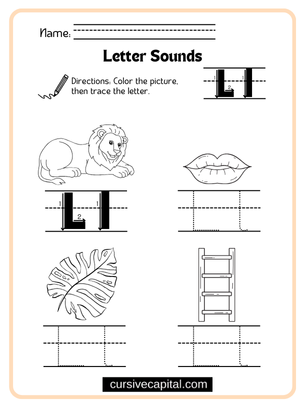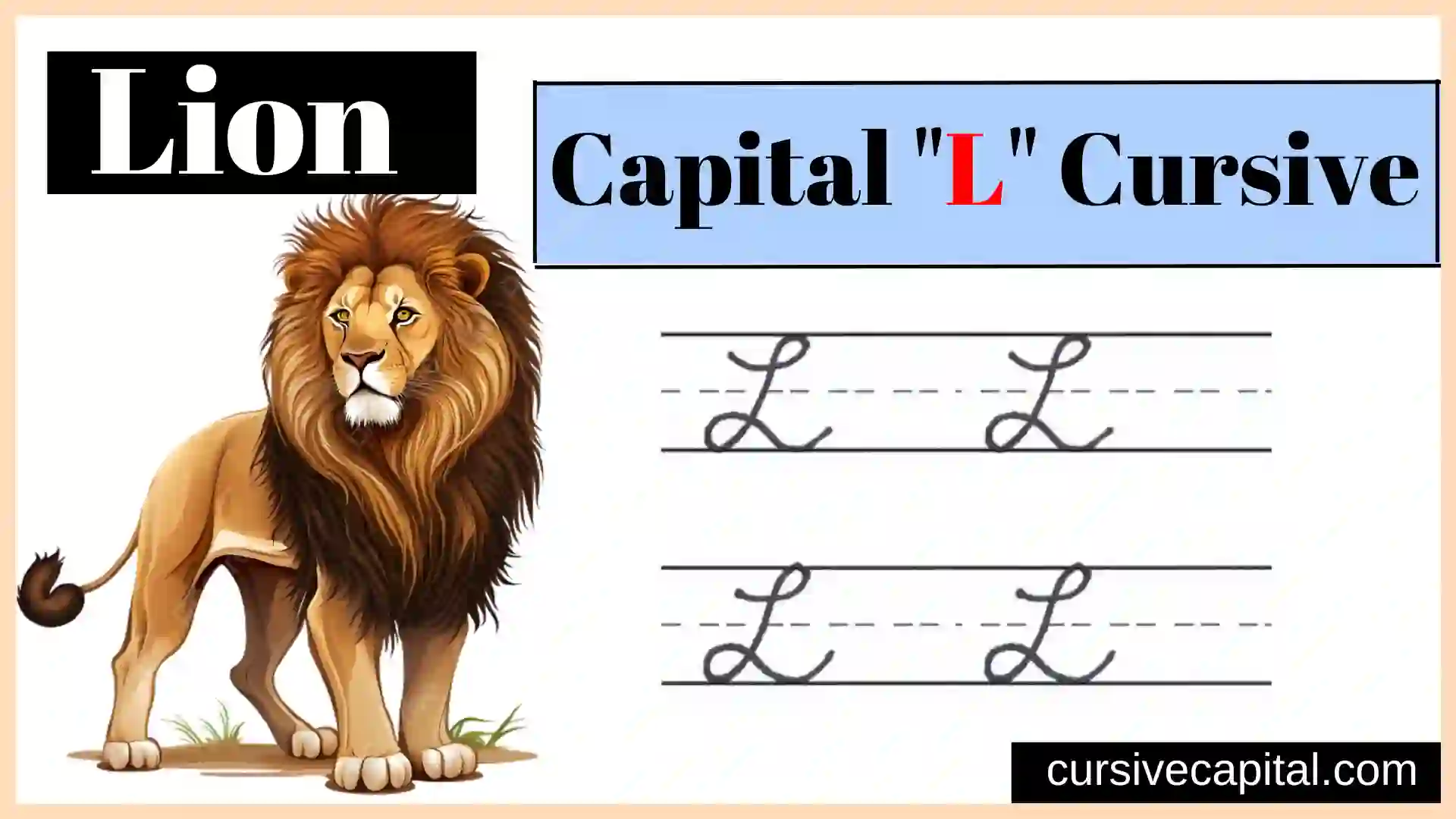How to Write a Capital L in Cursive? To write a capital L in cursive, form a vertical line down from the top line, then add a small horizontal line at the bottom.
Welcome to our comprehensive guide on mastering the art of cursive writing, focusing specifically on the elegance and beauty of the cursive capital “L”.
Cursive writing is an exquisite form of penmanship that has captivated generations with its flowing strokes and timeless appeal. In this article, we will delve into the intricacies of crafting the perfect cursive capital “L,” exploring its unique features, letter formation, and tips to achieve flawless execution.
Whether you are a student, an enthusiast, or simply someone seeking to refine their handwriting skills, our expert insights will empower you to create an impeccable cursive “L” that stands out and leaves a lasting impression.
How to Write a Capital L in Cursive?
To write a capital “L” in cursive, follow these steps:
- Step 1: Start at the top line (the same level as the cursive letters “E” and “F”).
- Step 2: Create a small loop towards the left, curving it slightly downwards.
- Step 3: Extend the curve to the right and draw a straight line downward.
- Step 4: Finish with a small hook or loop at the bottom.

Cursive Capital “L”
To master any form of writing, it is essential to understand the individual components that construct each letter. The cursive capital “L” is an amalgamation of specific strokes and loops that contribute to its alluring appeal. Here’s a breakdown of its anatomy:
- Entrance Stroke: The cursive capital “L” begins with a gentle upward stroke from the baseline, curving slightly to the right.
- Looping Ascender: After the entrance stroke, a graceful loop is formed by bringing the pen back down to the baseline, creating the main ascending part of the letter.
- Ascender Line: The loop extends upward, reaching the top of the letter’s height, and forms the ascender line.
- Exit Stroke: The cursive capital “L” concludes with a smooth downward stroke that descends to the baseline, completing the letter formation.
Tips for Perfecting Your Cursive Capital “L”
Crafting a flawless cursive capital “L” requires practice, patience, and attention to detail. Here are some valuable tips to help you achieve mastery:
1. Posture and Grip
Maintain a comfortable writing posture with your feet flat on the ground and your back straight. Hold the pen with a relaxed grip, allowing for smooth movement across the paper.
2. Consistent Slant
Ensure a consistent slant for your cursive letters. The ideal slant for cursive writing is around 55 degrees, giving your words a harmonious and uniform appearance.
3. Controlled Movement
Practice controlled and deliberate movements to create clean lines and loops. Avoid rushing, as this may result in irregular letter shapes.
4. Practice Letter Connectors
Cursive writing relies on the seamless connection of letters. Focus on practicing the transition from the preceding letter to the cursive capital “L” to achieve a natural flow.
5. Maintain Letter Proportions
Pay attention to the proportions of your cursive capital “L.” The loop should be well-balanced and not too large compared to the entrance and exit strokes.

The Elegance of Cursive Capital “L” in Practical Use
The cursive capital “L” finds its application in various contexts, adding elegance and sophistication to the written word. Here are some instances where it shines:
1. Signatures
The cursive capital “L” is a common choice for creating captivating and distinguished signatures. Its flowing and personalized appearance makes it a perfect fit for signing documents, artwork, or letters.
2. Invitations and Greetings
When designing formal invitations or writing heartfelt greetings, the cursive capital “L” adds a touch of refinement, setting the tone for the occasion.
3. Calligraphy and Art
Cursive capital “L”s are a popular subject in calligraphy and artistic expressions. Aspiring artists can experiment with various styles and embellishments to create unique and eye-catching designs.
Conclusion
In conclusion, mastering the art of crafting a beautiful cursive capital “L” involves understanding its anatomy, practicing with diligence, and appreciating the timeless elegance it brings to any written piece. Embrace the fluidity and grace of cursive writing, and let your cursive capital “L”s become a testament to the artistry of penmanship. With dedication and passion, you can elevate your writing skills and leave an indelible mark with every stroke of your pen.
